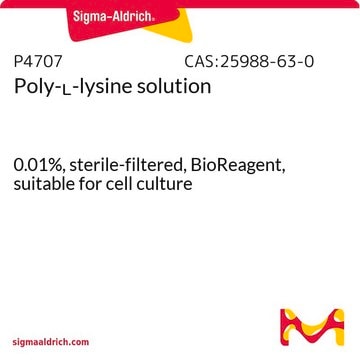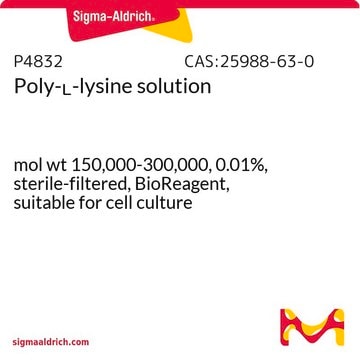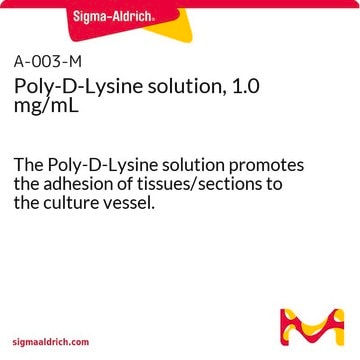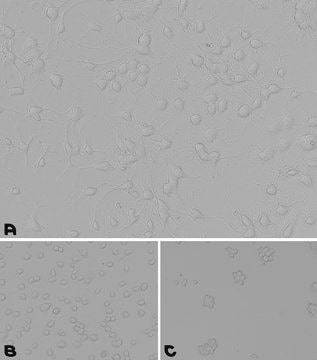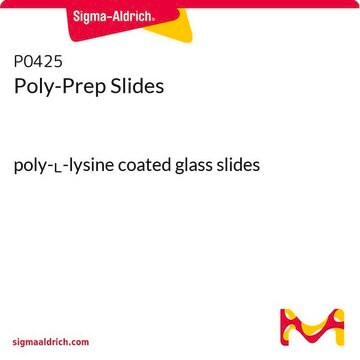The molecular weight of the Poly-L Lysine is 84,000 Da as provided in the PROPERTIES section of the Product Detail Page .
A-005-M
Poly-ʟ-Lysine Hydrobromide
synthetic, liquid, 0.1 mg/mL, suitable for cell culture
Sinonimo/i:
Lysine
Scegli un formato
Scegli un formato
About This Item
Prodotti consigliati
Nome del prodotto
Poly-L-Lysine Solution, 0.01%
Misura ago
2.0 mm
Livello qualitativo
Sterilità
sterile
Stato
liquid
PM
Mw 84000 Da
Produttore/marchio commerciale
NovaSeptum®
Concentrazione
0.01 % (w/v)
0.1 mg/mL
tecniche
cell attachment: suitable
cell culture | mammalian: suitable
Condizioni di spedizione
dry ice
Temperatura di conservazione
−20°C
Descrizione generale
The molecular weight of Poly-L-Lysine for cell culture can vary significantly, with lower molecular weight (30,000 Da) being less viscous and higher molecular weight (greater than 300,000 Da) having more binding sites per molecule. This product uses a Poly-L-Lysine of 84000 Da, yielding a solution viscosity for easy handling while providing sufficient binding sites for cell attachment.
Applicazioni
Azioni biochim/fisiol
Qualità
Nota sulla preparazione
1. Thaw Poly-L-Lysine solution at room temperature.
2. Dilute Poly-L-Lysine solution to the desired concentration in sterile water.
3. Fully coat the cell culture surface with diluted Poly-L-Lysine solution. Use 5 mL volume for 6-cm plates and 10 mL volume for 10-cm plates and T75 flasks.
4. Allow the cell culture vessel to sit at room temperature overnight.
5. Aspirate the Poly-L-Lysine solution the following day and rinse the vessel with sterile water followed by coating with desired ECM protein.
Note legali
Codice della classe di stoccaggio
12 - Non Combustible Liquids
Classe di pericolosità dell'acqua (WGK)
WGK 1
Punto d’infiammabilità (°F)
Not applicable
Punto d’infiammabilità (°C)
Not applicable
Certificati d'analisi (COA)
Cerca il Certificati d'analisi (COA) digitando il numero di lotto/batch corrispondente. I numeri di lotto o di batch sono stampati sull'etichetta dei prodotti dopo la parola ‘Lotto’ o ‘Batch’.
Possiedi già questo prodotto?
I documenti relativi ai prodotti acquistati recentemente sono disponibili nell’Archivio dei documenti.
I clienti hanno visto anche
Articoli
Extracellular matrix proteins such as laminin, collagen, and fibronectin can be used as cell attachment substrates in cell culture.
-
What is the molecular weight of this?
1 answer-
Helpful?
-
Active Filters
Il team dei nostri ricercatori vanta grande esperienza in tutte le aree della ricerca quali Life Science, scienza dei materiali, sintesi chimica, cromatografia, discipline analitiche, ecc..
Contatta l'Assistenza Tecnica.